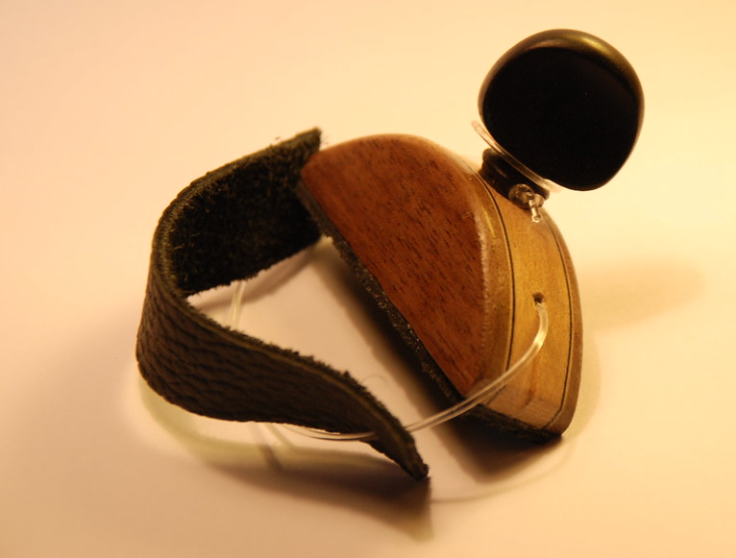
The History of the Guitar Capo
The key to key changes for nearly 300 years
The capo is a little thing, but its impact is not. Easily misplaced, tucked away in the case along with strings, picks, and other tools of the trade, a player might cycle through a few—or a few dozen—capos in a lifetime. And while most don’t care to know where it comes from, all who’ve used one understand that this unassuming frame, responsible for centuries of sound, is too important to be left behind.
This is the history of the little thing that’s made a big difference.
The word capo comes from the Italian capotasto, capo meaning head, and tasto meaning key, tie, or fret. In a document from 1640, the Italian Musicologist Giovanni Battista Doni uses the word capotasto to describe the nut on a viola da gamba, a family of hollow, wooden stringed instruments now referred to as viols.

The first known capo dates back to the mid-1700s. Made out of a single piece of metal, typically brass, and curved to cup and squeeze the neck, these rudimentary C-shaped devices had no tension adjustment and simply slipped into position from the side.

The late 1700s brought about more familiar iterations. The “yoke”-style capo looks much the same now as it did then—a simple metal frame with a static bar and adjustable screw plate underneath the neck to control tension. The Spanish cejilla is almost an inverted version of the same design, constructed with a fixed leather strip that loops under the neck and a more substantial wooden bar with a top-mounted screw.

In 1850, James Ashborn of Wolcottville, Connecticut, a renowned luthier, applied for the capo’s first official patent. His design varied from the yoke and cejilla, employing a wooden cylinder and brass thumbscrew to apply pressure from beneath the neck.

Shortly after, hundreds more capo designs hit patent offices. The Filstrup, F.O. Gutman, and Elton capos—all similar to Ashborn’s original—hit market, selling in music stores and even the Sears catalog, alongside popular “catalog guitars” of the era.


At the turn of the century and into the 1920s, manufacturers began experimenting with built-in capos, or “inlaid” capos. Affixed permanently to the guitar’s neck, these pre-installed capos ran along channels cut into the side, or, in the case of the extremely rare “Capo Guitar” sold exclusively in the Sears catalog, a track cut directly into the center of the fingerboard itself. This high-end design included a spring-loaded button to release tension and move the capo as high as the eighth fret. The same button also disengages the capo entirely, which stores neatly behind the nut.
In 1931, W. H. Russel patented the elastic capo, maybe the most popular capo of all time. Inexpensive, convenient, and widely available, these capos use the natural tension of elastic to hold the bar in place and are still a popular choice for novice or budget-conscious musicians.

Partial capos, in some form or another, may have been in use as early as the late 19th century, but very little evidence exists before the 1960s when musicians began to take advantage of the device’s modified bar to create complex chords and tonal colors with just a squeeze. Designs vary, pressing down anywhere from one to five strings, but certain varieties, like the famous “Third Hand,” introduced in 1980, are adjustable for more combinations.

The 1960s and '70s brought more variations on these core designs. The Hamilton capo modified the C-clamp, adding a knob for adjustable pressure. Jim Dunlop introduced the level action capo and the Picker’s Pal, a CAM-action capo based on the English yoke that provides even tension across the fingerboard. H. Bauerfeind invented a plastic model in 1973. And a year later, in 1974, Rick Shubb shared his idea for a lever-operated 5-string banjo capo with an additional adjustable screw, installing one for Grateful Dead frontman Jerry Garcia, who helped Shubb arrive at the capo’s final design.
Enter Milton Kyser. In 1981, Milton brought the Kyser® Quick-Change® Capo to the bars and clubs of Deep Ellum, Texas, and in no time at all, the music world was a-buzz. The most reliable, effective, and well-crafted capo ever, the Kyser® Quick-Change® quickly made its way into every bag, hardshell, and travel case, offering players fast, one-handed key changes with an American-made design and lifetime warranty for years of perfect pitch.
And 40 years later, the Kyser® Quick-Change® Capo is still here. Sure, we’ve made a few updates here and there. We’ve added low-tension models, special editions, and cutting-edge technology like the all-new Kyser® ColorMatch® System, but Milton’s classic Quick-Change® is still the same as it was, made to last, and here today, tomorrow, and beyond.



1 comment
I just purchased a drop d capo and on the package it said something called the K-Lever. What is it? cant find anything about it on your web page..
Shawn
Leave a comment
This site is protected by hCaptcha and the hCaptcha Privacy Policy and Terms of Service apply.